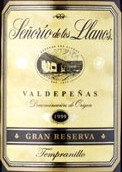Should we stage a Boston Wine Party, and throw our wine into the Atlantic?
Perhaps the most striking aspect of the bewilderingly diverse wines on display at this week’s FENAVIN, Spain’s national wine fair, is the price range: 2€–5€ is most common, trailed slightly by <2€ (a significant category, with strong representation from La Mancha, the wine fair’s home region) and 5€–10€.
 In the 2€–3€ range are a vast assortment of sometimes steely, often aromatic, almost always appropriately acidic whites from Castilla-La Mancha and other lesser-known regions. If you want a 1994 or 1995 Gran Reserva from La Mancha—an eminently mature Tempranillo, Cabernet Sauvignon, or Tempranillo-Cabernet blend—it might cost you up to 6€.
In the 2€–3€ range are a vast assortment of sometimes steely, often aromatic, almost always appropriately acidic whites from Castilla-La Mancha and other lesser-known regions. If you want a 1994 or 1995 Gran Reserva from La Mancha—an eminently mature Tempranillo, Cabernet Sauvignon, or Tempranillo-Cabernet blend—it might cost you up to 6€.
All of this is a prescient reminder of the three-tined gouging of the American wallet—and, by extension, of the American palate—that defines our wine industry.
The first tine is regulatory: the unconscionable customs duties imposed at our borders, and, worse still, the preposterous bureaucratic labeling and testing rules that are imposed by the Bureau of Alcohol, Tobacco, Firearms, and Explosives. (Is there anything that more clearly reveals our government’s still-Puritanical view of wine drinking as a vice than this agency’s name?)
The irony of these idiotic rules, at least as concerns the importation of Spanish wine, is that the EU’s own regulation of so-called “quality wine” (i.e. non-table wine) is actually far more restrictive than our own domestic wine laws, which allow all sorts of preservatives and additives that would be illegal in Europe.
Yet we force Spanish wine producers to spend thousands of dollars in farcical chemical analysis (a boondoggle for sham chem-lab outfits that have been legislated into existence) and an onerous label-approval process. These arbitrary, extortionist barriers to entry function like a medieval wax seal, blocking much of Europe’s best-value wine from ever showing up in America.
This protectionist regime reminds me of the brief rule of Abdalá Bucaram in Ecuador. Before President Bucaram was removed from office after six months for “mental incapacity,” he famously (okay, famously in Ecuador, anyway) imposed a 1000% “luxury tax” on imported wines and liquors. The toxic effects of the luxury tax on consumers were a principal reason for his ouster. (The silver lining was that Ecuador got its first woman president, Rosalía Arteaga, who had been Bucaram’s vice-president—before the legislature got rid of her, too, two days later.)
US wine policy doesn’t just rob consumers blind—it also takes away pressure on our own producers to compete globally on price, which ultimately works against them. Ever wonder why the US exports so little wine?
The second tine is legislative: the extraordinary markups that importers and distributors still take are protected by a state-by-state three-tier system (importer–distributor–retailer/restaurant) that was set up at the repeal of Prohibition for the sole purpose of limiting how much Americans drink.
In the civilized modern world, wine stores are allowed to buy wine from wine producers, and sell it at a reasonable markup. In our bizzarro world, a middleman is legislatively mandated.
These archaic blue laws and the industry that they have engendered—artifacts of an era in which the religious fervor that brought about Prohibition was still a very real cultural norm—continue to rob consumers of billions of dollars, year after year.
The third tine is what happens in restaurants: wine multiples of 2.5x, 3x, or even 4x. When US consumers are being asked to pay $40 at retail for a wine that sells in Spain for 3€, we’re exactly matching Bucaram’s 1000% markup.
In short, if we were to do a Spanish version of The Wine Trials—Fearless Critic’s guide to inexpensive wines—its price cut-off wouldn’t be anywhere near the $15 per bottle that it is in the US. would probably be limited to wines under 5€, or US$6.65—or perhaps even under 3€, or US$2.25.
The Spanish wine industry, of course, deserves a lot of credit for pricing so reasonably. Congress should be deeply ashamed of its consistent record of preventing our own country’s industry from doing so.




Cole
– As a wine retailer, the value add for me is that the importer/distributor system creates an editorial system to help me navigate the world’s millions of wine producers to find wines that I (based on quality and style) should be selling. I recognize the system as very useful, but still convoluted.
– What would the alternative look like? Yes, I could directly contact every winemaker in the world to ask them to mail me a sample bottle of their wine, but then again, so would every other wine retailer/restaurant in the world, which would totally kill all the winemaker’s profit.
– The bureaucratic regulatory tests needed for US wine are generally totally absurd and not helping anyone but the companies created b/c of it. It’s very hard to educate consumers that the $10 bottle of Spanish wine is almost assuredly more “organic” than the $25 bottle of USDA “organic” wine.
– Feel free to email me because I would actually love to chat more about this, I just got off a very long phone call with a distributor where we were discussing a makeshift way we might try to help consumers out with this.
Granite
–the Bureau of Alcohol, Tobacco, Firearms, and Explosives. (Is there anything that more clearly reveals our government’s still-Puritanical view of wine drinking as a vice than this agency’s name?)–
Hey!!! You’re disparaging Tobacco, Firearms and Explosives there!!!
Mark
Ok so I am the cofounder of a wine club and I wish this would be changed. We take time to hand select wines and relationships do matter in this business. It’s difficult to be a direct retailer especially if you don’t focus on wine, but the current system with state by state laws is clearly broken.
Stretch
A 47 years old of Cincinnati uses Viagra regularly says that unlike men Viagra in women can lead to a clear sense of where you are.; xanax 389;